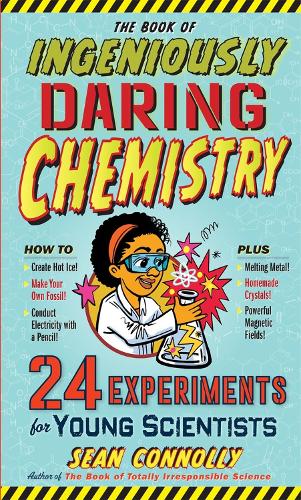
The Book of Ingeniously Daring Chemistry: 24 Experiments for Young Scientists
(Hardback)
Publishing Details
The Book of Ingeniously Daring Chemistry: 24 Experiments for Young Scientists
By (Author) Sean Connolly
Workman Publishing
Workman Children's
30th October 2018
United States
Classifications
Children
Non Fiction
540.78
Physical Properties
Hardback
256
Width 146mm, Height 234mm, Spine 24mm
430g
Description
Journey through the periodic table of elements all you need is some adrenaline-pumping curiosity, a sense of adventure, and a well-stocked pantry!
From Sean Connolly, the master of messy and dangerous science books which together have 615,000 copies in print comes an introduction to chemistry for kids age 9 and up, a perfect addition to his STEM (Science, Technology, Engineering, and Math) titles. Each fully illustrated chapter focuses on a single elementfirst describing its properties, how it was discovered, and even its potential danger level. Then easy-to-follow experiments help readers put their newfound knowledge into action by using everyday household ingredients such as light bulbs, eggs, and fridge magnets.
Sodium: Make hot ice by crystallising vinegar and baking soda into sodium acetate.
Neon: See how this gas emits light by powering a light bulb with static electricity.
Iron: Submerge steel wool in vinegar to see how this metal oxidises.
And phosphorus: Play cat detective by using ultraviolet light to locate bad cat smells! Elements are the building blocks of our world and The Book of Ingeniously Daring Chemistry is a building block to our understanding them.
Reviews
"This is a compelling and substantive lesson in chemistry for young students."Parents' Choice
"This substantial chemistry primer explores complex concepts in an approachable, graphics-laden format Connolly writes with light humor that serves to spark readers natural curiosity. This is a lively, hands-on introduction to chemistry." Publishers Weekly
Author Bio
Sean Connolly is the author of The Book of Totally Irresponsible Science, The Book of Potentially Catastrophic Science, and The Book of Perfectly Perilous Math, and dozens of other books for both children and adults. A father of three, he is in an ideal position to explain the nuts and bolts of these experiments.
